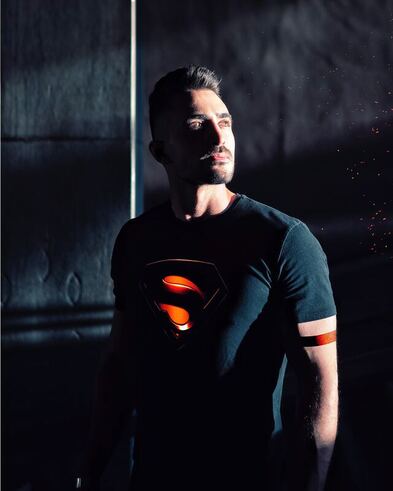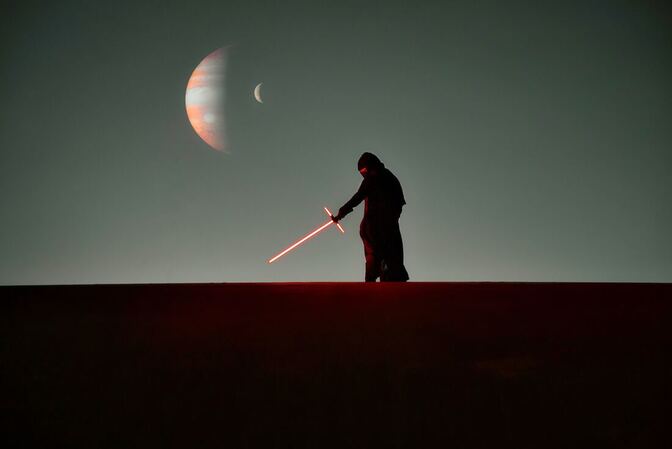|
Recently the new Blue Beetle trailer came out and while it looked cool enough, it didn’t excite me the way these things used to in the late Nineties and 2000’s when I was a teenager desperate for superhero and fantasy action. There have been a lot of superhero films released this past year and while one or two have been pretty good, most have been forgettable. I fell asleep during Black Adam, and I didn’t bother going to Shazam 2, a rare instance that I miss a superhero movie. Back to the Blue Beetle trailer–As a Latino moviegoer, I was excited to see a movie with a Latino lead and family at the center, but the trailer didn't seem to do enough to make this stand out. Instead, they leaned into the transformation of Xolo into Blue Beetle in all of its visual effects glory; this is something we’ve experienced in every superhero film, something we know, something we’ve seen. There are still many reasons to believe that this one can be a good movie; there are plenty of trailers that come out for films that I haven’t liked, but I’ve enjoyed the film. For now, it just looks like just another mediocre superhero film in a string of ordinary superhero films. Hopefully I’m wrong.  unsplash.com/@24ameer unsplash.com/@24ameer Let’s take a look at what sets a superhero film apart and how to beat the fatigue that comes with release after release of the same movie. As I understand it, superhero movies are what Westerns and musicals were like in their heyday. They were the genre that worked best for everyone, so Hollywood pumped out more and more films even if they weren’t great. James Gunn, head of DC, recently pointed out that there is indeed such a thing as comic-book fatigue as a few outlets report, including Variety.* He points out that what we are sick of is seeing the same old stories, not necessarily that we are sick of superheroes. There has been a lot of dialogue from a lot of pundits in the online space and even Marvel’s Kevin Feige chiming in on “Superhero Fatigue” agreeing or disagreeing with audience sentiment, and it seems like Gunn finally just admits that it’s here. 1. Diverse stories bring something new to the silver screen. You won’t hear me stop talking about diversity, it’s not just about representation. It’s good business, and it brings unique and fresh stories to the forefront after years of the same old content that we’ve all seen before— when it works, the numbers and box office goes up. NALIP reports that 23% of moviegoers are Latino. Wakanda Forever is a great example of a story driven by a more diverse cast in the Marvel cinematic universe. While I’ve talked to a few Chicanos, and mestizos that struggled with the way that the Mexicans are portrayed as villainous even as they are living out the effects of colonialism and mass genocide, at least there was a portrayal with some motivation that made sense. (Personally I think Namor was portrayed as overly unreasonable, but that’s a different discussion). The entire film centered around grief and loss while dealing with the challenges of colonialism between two nations–a complicated thing to see on the screen, but a plot device that brings something more fresh to a comic book film. The trailer for Blue Beetle could have emphasized the Hispanic element and family dynamic to make the movie stand out from other superhero films. (again, the movie might still do this, I only have the trailer as a reference) The film would benefit from playing on Hispanic antics in familial settings and the reactions that would ensue, and how that would affect the mom, dad, abuelos with cultural significance at play. See My Big Fat Greek Wedding–a movie about culture clashing and a romantic comedy. A similar concept could be applied to the Blue Beetle sequels but with the use of a superhero genre. An important note on diversity: It’s always best to work with consultants within the culture to portray characters, cultures, and stories from diverse backgrounds accurately so as not to appropriate. It also benefits those artists/writers/storytellers so that they are the ones earning from the projects. 2. Ground the story more in reality, lean into the ordinary and the extraordinary will soar. What makes this feel more grounded in reality is that it is relatable. Logan provides a great example of grounding a superhero story in reality—it focuses on an aging Wolverine caring for a sickly Professor X. The mundane struggles in Logan make the extraordinary moments all the more impactful and memorable. By this point, we know the X-Men universe–they are mutants, we get their powers, we can leave behind the “how they got their powers montage” and just focus on dying out mutants and their persecution–something that is unfortunately relatable by today's standards. (Mutants are a glaringly obvious metaphor for the LGBTQ+ community for those who still haven’t caught on or catch on but choose to not care.) Grounding these stories in reality helps us relate–it’s why we all love Spiderman, the guy who is a nobody, bullied, just wants to enjoy high school or get through college. Contrast this with Ant-Man and the Wasp: Quantummania in a Quantum universe that doesn’t seem at all feasible, with contrived societies that are attempting to be framed as another universe rather than the “quantum realm.’ Quantumania abandons much of the world building it did in previous installments featuring the quantum universe making its underworld hard to decipher for viewers. (Also, the Wasp hardly has anything to do, why is it “Ant Man and the Wasp” again?) I digress, but had to just bring that up for a second. 3. Infuse a story, plot convention, or genre into a universe. (Heist, prison break, lost at sea, western.) According to Robert Meyer Burnett, the key to creating successful franchise films, superhero films, or Star Wars films is to start with a strong, emotionally resonant story and set it in the existing universe. A great example of this is the Andor series; a show about standing up to tyranny and imperialism, and the effects of colonialism, dehumanization, and human trafficking. The main heart of it is the characters, Andor’s relationship with his mother as someone who takes care of him after his planet is colonized and the effects of him being a fugitive. So much of this story could have taken place outside this universe and it would have worked anywhere, and even as a stand-alone non-franchise film, but it was set in Star Wars. In conclusion, more characters grounded in a relatable reality, less explosions. (Am I turning 34 and just crave dialogue and tension more or is it all just getting boring?) Action is better when there is a character and story driven purpose behind it. Diversity brings new and unique stories, which is something we are all desperate for when going to the movies. If there are going to be explosions, let them be driven by strong story, emotional arcs, and character development that pays off. *variety *Burnettework
0 Comments
Leave a Reply. |
Andrés SalazarPhotos, Headshots, Short Video |

